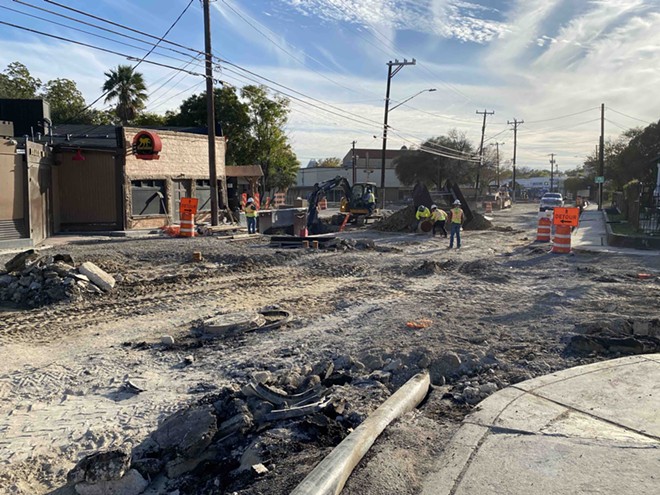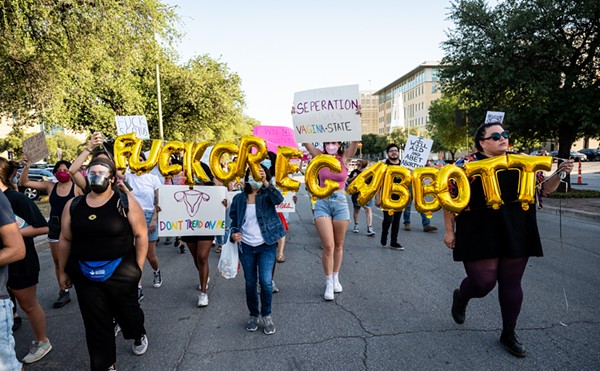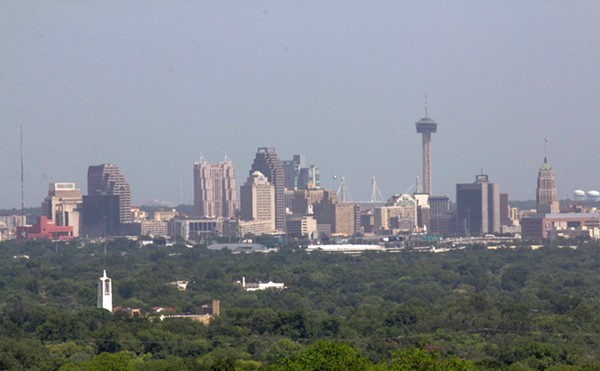
Editor's Note: CityScrapes is a column of opinion and analysis.
When I think of the construction woes currently throttling traffic and commerce across San Antonio, North St. Mary's Street jumps to the fore.
It feels like the Strip has been under construction for years, with constantly changing detours and lanes making it all but impossible to navigate to restaurants, clubs and services. Difficult as it's been for potential customers, it's been far worse for business owners, whose patronage and revenues have plummeted.
The promise in San Antonio's 2017 city bond program was that the $7 million St. Mary's project — just one of 64 projects in the bond's $445 million street improvement component — would provide "sidewalk connectivity, intersection improvements and signal enhancements as appropriate and within available funding."
The promise of "sidewalk connectivity" was certainly welcome and appropriate. For much of San Antonio's history, the provision of sidewalks in neighborhoods was the responsibility of property owners. As a result, we ended up with lots of areas — typically lower income ones — with no sidewalks at all, and others with disconnected stretches of pavement, making walking an adventure.
But while the promise of new and better sidewalks along St. Mary's is laudable, it seems to be taking forever to get them. The 2017 bond brochure didn't provide an estimated completion date that could be readily found. Instead, the city's fiscal year 2018 budget showed the bulk of the spending on the North St. Mary's project would be in fiscal year 2020 with the final amount coming in fiscal 2021.
Now, city officials promise the project will be completed in summer 2023 at a total cost of $11.4 million, including some added features. That's not just a delay of weeks or a couple of months compared to the original promise.
And North St. Mary's is far from the only major street improvement project that appears to be stuck in excruciating slow motion. A large stretch of Broadway is impassable, North New Braunfels Avenue is all torn up and work on North Main Avenue downtown seems to be unending.
So, it's great that Councilwoman Melissa Cabello Havrda proposed and secured unanimous council backing for an ordinance giving city staff the authority to assess contractors' ability to keep on schedule, within budget and to complete a quality job. The new ordinance should give the city the capacity to block contractors that underperform from securing new civic projects.
Delays aren't always the fault of a contractor, though. The recent project update for St. Mary's notes "challenges" with utilities and soil conditions as reasons for the slowdown. Still, the city needs to be able to deliver on the improvements it promises to the public in its every-five-years bond programs in a timely, effective way — and with as much transparency as possible.
A look at the city's latest 2017 "Bond Dashboard" shows the St. Mary's project is "on time." That doesn't appear to reflect the reality on the ground.
So, as we look forward to results from Havrda's ordinance — and an accounting as to whether any contractors are actually held accountable and sanctioned for underperformance — some greater transparency on how the individual bond projects are proceeding would be a significant advance.
And if city staff is actually going to evaluate contractors on qualities such as "responsiveness" and "quality of work," all of us should be able to easily learn which projects aren't measuring up to those standards, and who's to be held accountable.
Too many delays and too many unexplained disruptions might well lead to far more "no" votes on the next big bond program. If that program fails as a result, delaying much needed improvements, city leaders will only have themselves to blame.
Heywood Sanders is a professor of public administration at the University of Texas at San Antonio.
Follow us: Google News | NewsBreak | Instagram | Facebook | Twitter
















